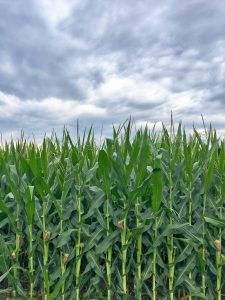4R Benefits
 4R Nutrient Stewardship looks at decision management in the context of the economic, environmental, and social impacts of a practice. Another way to look at these factors is Profit, Planet & People. The “right” management system for a given farm should benefit each of these factors by reducing input costs and/or improving yields, reducing nutrient losses and without compromising quality-of-life for farmers, employees or communities.
4R Nutrient Stewardship looks at decision management in the context of the economic, environmental, and social impacts of a practice. Another way to look at these factors is Profit, Planet & People. The “right” management system for a given farm should benefit each of these factors by reducing input costs and/or improving yields, reducing nutrient losses and without compromising quality-of-life for farmers, employees or communities.
A good place to start is to identify the objectives for implementing a 4R management system. The “right rate” will differ between objectives to maximize yields or increase profit, for example. Having clearly defined performance objectives will help to guide decisions on which new management practices have the potential to fit your operation, the criteria that should be used to evaluate performance, and whether or not the new practice is meeting the desired objective.
Benefits of implementing 4R management can include:
- Reducing inputs and input costs
- Better crop quality
- Improved yields
- Reduced erosion and nutrient leaching
- Financial incentives through nutrient trading or other sustainability markets
4R practices and their benefits will vary according to each farm, field and growing season, but should line up with the identified objectives. Each growing season is an opportunity to evaluate the outcome from the previous season and make adjustments that will offer continuous improvement toward the goals of the farm.
A few examples of the benefits of specific practices include:
- Nitrogen Modeling supports decisions that apply the right rate at the right time by estimating the amount of nitrogen available to a growing crop throughout the season, based on site-specific environmental and management information. A study evaluating the use of Nitrogen Modeling to guide fertilizer side-dress rates to corn showed that rates were on average 47 lb/ac lower for growers in New York, with no statistically significant difference in yields. On average, use of Cornell’s model, Adapt-N, increased grower profits by $26 per acre and reduced simulated environmental N losses by 25 lb/ac (38%).
 Cover Crops can help to retain and cycle nutrients in the soil by scavenging nitrogen left over at the end of a growing season, preventing erosion and building soil organic matter. Cover crop management, including selection of species and mixes and establishment/termination timing, can be tailored to support the goals of each farm and field. Early-planted rye can take up more than 70 lb of nitrogen per acre, and as much as 140 lb/acre of nitrogen has been measured 7-10 after termination of a pure hairy vetch stand. (SARE’s book, Managing Cover Crops Profitably, is available online.)
Cover Crops can help to retain and cycle nutrients in the soil by scavenging nitrogen left over at the end of a growing season, preventing erosion and building soil organic matter. Cover crop management, including selection of species and mixes and establishment/termination timing, can be tailored to support the goals of each farm and field. Early-planted rye can take up more than 70 lb of nitrogen per acre, and as much as 140 lb/acre of nitrogen has been measured 7-10 after termination of a pure hairy vetch stand. (SARE’s book, Managing Cover Crops Profitably, is available online.)- Variable Rate Nutrient Applications support right placement and right rate for fertilizer applications, by quantifying the spatial variability in soil conditions and managing inputs to address that variability. Different management zones can be based on variability in historic crop yields, soil types, grid or zone soil sampling results, optical sensors, or other criteria. The return on investment for variable-rate technologies seems to be dependent on the amount of spatial variability. Ensuring that management strategies are addressing the right reason for variability is also critical. In one study, use of crop sensors saved an average of 23 lb N/acre relative to the rate the producer would normally use with no effect on average yield. Researchers attributed the savings to better timing of the in-season fertilizer application, as well as better assessment of the right rate.